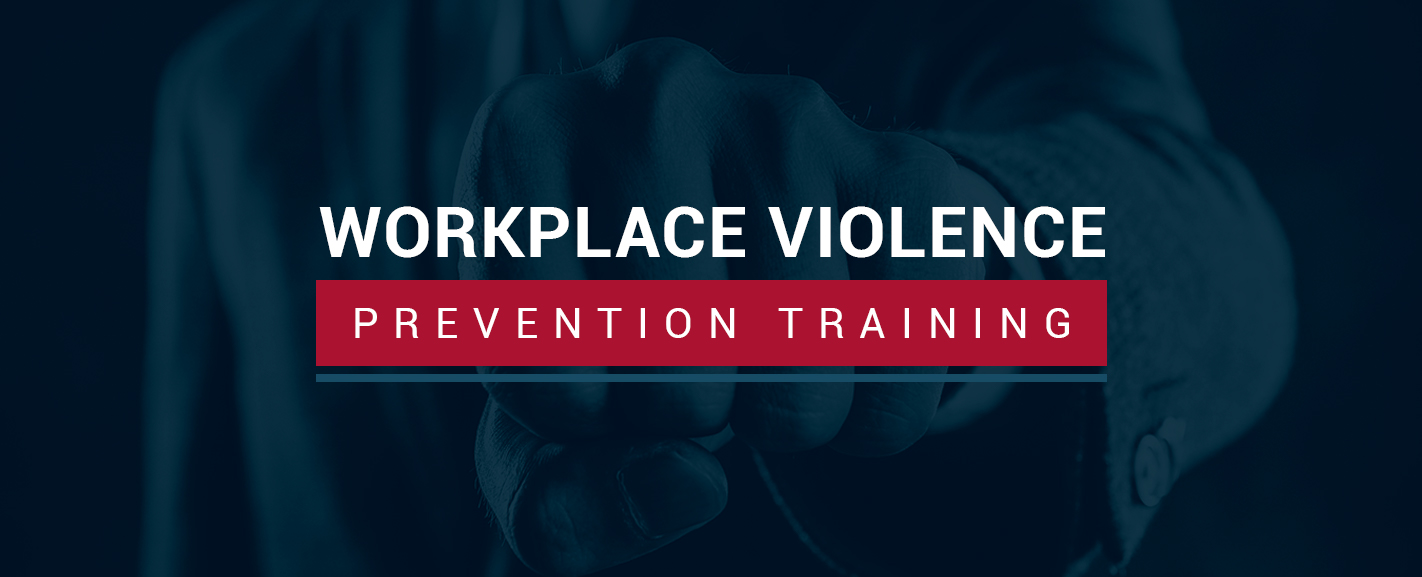The Duty of Training in California Workplace Violence Prevention: Secret Insights
The Duty of Training in California Workplace Violence Prevention: Secret Insights
Blog Article
Assessing the Effect of Office Culture on the Success of Violence Avoidance Efforts and Staff Member Wellness
The junction of workplace society, violence avoidance efforts, and staff member well-being warrants careful assessment, as these elements collectively affect organizational success. A society that focuses on open interaction and psychological security can empower workers to recognize and report potential threats, thus cultivating a setting helpful to both mental wellness and effective violence avoidance strategies.
Understanding Office Culture
Frequently, workplace culture functions as the structure for worker communications and total business habits. It includes the shared worths, ideas, and practices that shape the environment in which employees operate. A favorable work environment society promotes cooperation, respect, and open interaction, while a negative culture might reproduce stress, mistrust, and hostility. Understanding workplace culture is critical for companies aiming to execute efficient physical violence prevention techniques.

Organizations have to evaluate their existing work environment society to identify areas for enhancement. This evaluation can include surveys, emphasis groups, or individually discussions. By recognizing the social characteristics at play, organizations can carry out targeted interventions that promote a much safer and much more considerate workplace, ultimately minimizing the threat of violence in the workplace.
Duty of Staff Member Well-Being
A favorable office culture not just affects business actions but additionally dramatically effects employee wellness. When employees feel valued and respected, their general job fulfillment increases, leading to improved mental and psychological health and wellness. This, consequently, promotes a sense of belonging and commitment, which is vital for long-term engagement and productivity.
Furthermore, a supportive cultural setting promotes open interaction, enabling staff members to share concerns and seek assistance without worry of stigma. This visibility is critical in dealing with problems connected to tension, burnout, and interpersonal problems, which can negatively influence both individual wellness and organizational consistency.
Additionally, organizations that prioritize employee well-being commonly see reduced absenteeism and turn over prices. Healthy and balanced employees are a lot more resistant and much better equipped to handle office challenges, adding to a more secure and productive labor force.
Spending in employee wellness through campaigns such as wellness programs, psychological health sources, and flexible working arrangements can create a positive responses loop, enhancing both specific satisfaction and collective organizational success (california workplace violence prevention). Eventually, focusing on employee health is not simply a moral imperative; it is a tactical method that benefits the whole organization
Physical Violence Avoidance Techniques
Executing reliable violence avoidance approaches is vital for keeping a healthy and balanced and secure workplace atmosphere. Organizations should embrace an extensive technique that includes policy advancement, staff member training, and aggressive interaction. Establishing clear work environment violence policies is the initial step, ensuring that all staff members understand appropriate habits and the repercussions of violations.
Training programs must be designed to inform workers about identifying caution indications of potential violence, conflict resolution techniques, and emergency situation response procedures. Normal drills and simulations can improve preparedness, cultivating a society of understanding and responsibility.
Moreover, cultivating open communication channels urges employees to report concerns without anxiety of revenge. This can be facilitated with anonymous coverage systems or regular responses sessions. Additionally, promoting a helpful workplace society that values respect and inclusivity can significantly mitigate the danger of physical violence.
Organizations needs to additionally engage in regular assessments of their workplace society and physical violence prevention approaches, adjusting them to advancing requirements. By prioritizing these techniques, companies not only safeguard their workers yet additionally improve total wellness, eventually adding to a more effective workplace.
Measuring Social Influence
Measuring the influence of workplace culture on physical violence prevention initiatives is vital for understanding the performance of existing approaches and recognizing locations for improvement - california workplace violence prevention. To achieve this, companies have to utilize a complex approach that combines measurable and qualitative techniques. Studies and assessments can collect information on staff member assumptions of work environment inclusivity, assistance, and security systems, while case reports give concrete proof of violence incidents and their context within the business society
Additionally, emphasis groups and interviews can reveal much deeper understandings right into employees' ideas, perspectives, and experiences surrounding violence prevention initiatives. Analyzing this qualitative information helps organizations to identify cultural toughness and weak click for more info points that might either promote or hinder efficient prevention techniques. Moreover, benchmarking versus industry standards allows for relative evaluation, aiding organizations gauge their performance family member to peers.

Developing Helpful Environments
Often fostering an encouraging setting within the workplace is necessary for efficient violence prevention. Such atmospheres equip workers to interact openly regarding their experiences and concerns, thus identifying prospective problems before they rise. A culture of assistance enhances trust amongst staff member, motivating collaboration and aggressive analytical.
To create a helpful setting, organizations need to focus on training programs that concentrate on conflict resolution, emotional intelligence, and energetic look at here now listening. These abilities gear up staff members to handle interpersonal relationships constructively, minimizing the possibility of misunderstandings that can cause physical violence - california workplace violence prevention. Furthermore, applying mentorship programs can give employees with guidance and confidence, contributing to their overall health
Management plays an essential function fit an encouraging work environment society. By modeling empathetic actions and showing a dedication to employee welfare, leaders set a tone that encourages others to adhere to fit. Routine feedback mechanisms, such as confidential surveys, can also help evaluate worker view and emphasize locations for improvement.
Ultimately, straight from the source a helpful atmosphere not only minimizes the danger of physical violence yet also improves staff member morale, work complete satisfaction, and performance, strengthening the company's commitment to cultivating a risk-free and thriving office.
Final Thought
A positive office society substantially influences both violence avoidance initiatives and staff member wellness. By promoting open interaction and urging the reporting of worries, companies can enhance mental wellness and job contentment amongst staff members.
The intersection of workplace culture, violence prevention initiatives, and staff member well-being warrants cautious evaluation, as these components collectively affect organizational success. A culture that focuses on open interaction and psychological safety can equip staff members to determine and report potential dangers, thereby promoting a setting helpful to both mental health and wellness and reliable violence prevention strategies.A positive workplace culture not only affects organizational behavior but also dramatically impacts employee wellness. Surveys and assessments can gather information on worker perceptions of office inclusivity, assistance, and safety systems, while occurrence reports supply concrete evidence of violence occurrences and their context within the business society.
A favorable work environment culture substantially affects both physical violence avoidance initiatives and employee wellness.
Report this page